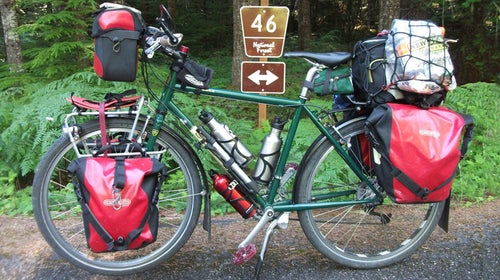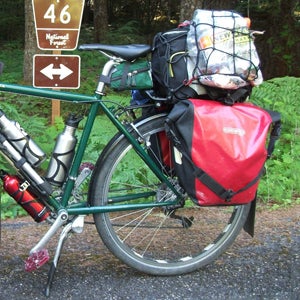That’s a great question. I’ve toured with both, and the bottom line is that each have their advantages and their drawbacks.
I like panniers for their relative simplicity: they’re easy to use and they’re hard to break or wear out. And in a pinch, they can double as day packs or duffels when you’re off the bike.
The downside is that panniers aren’t aerodynamic and add weight, stressing your bike’s tires and rims. They also make handling a little wonky. If you decide to stay with panniers, make sure to use both front and rear racks to evenly distribute the load.
Best Panniers: Ortlieb Back-Roller Pannier
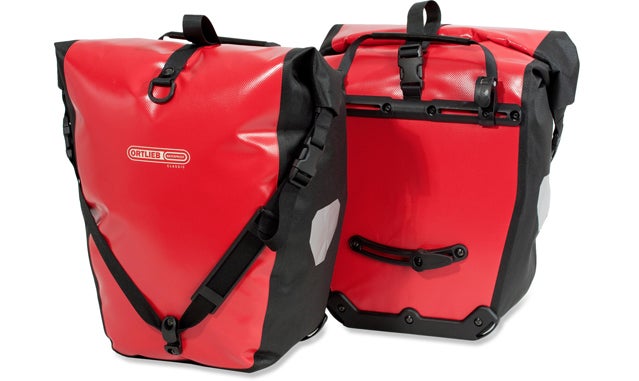
At the high end, Ortlieb’s classic panniers ($180 per pair) are completely waterproof and carry roughly 2,400 cubic inches of gear. With a roll-top design, they’re rugged, reliable, and practical. The ($37) makes for an easy conversion into a backpack.
Best Panniers: Jandd Mountain Pannier
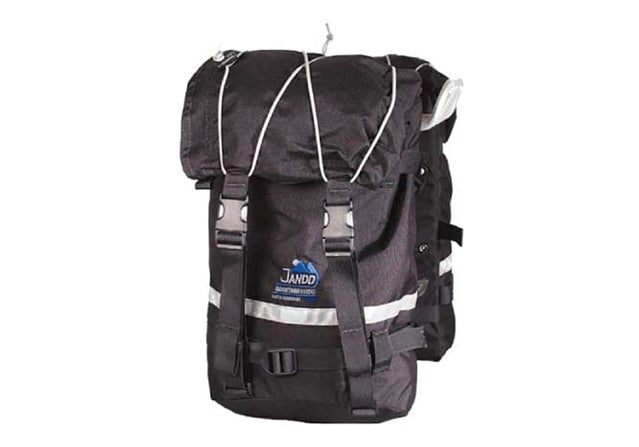
Another option is Jandd’s ($159 per pair). I mention these because they’re trim enough to fit on the front or back but still manage around 2,200 cubic inches capacity (or more if you order a larger model). Unlike Ortlied’s panniers, they aren’t waterproof, but they do have a deep storm collar to block water, plus bungee straps for attaching an extra jacket or sleeping pad.
Best Trailer: Bob Yak
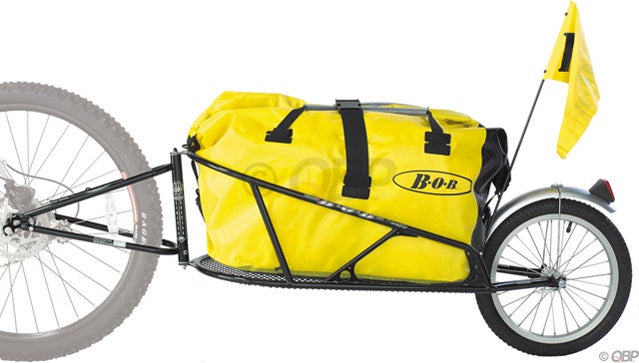
Unlike panniers, trailers keep your load off your bike, reducing stress on its frame and keeping its tires from deforming and causing more drag. They’re also more aerodynamic, and for really big self-supported trips, they allow you to carry a huge amount of gear. (Some would argue too much—there’s always room for one more thing in a trailer.)
The downside is an added degree of mechanical complexity: another spoke to keep an eye on, another tire to go flat, a connection to the bike that has to be managed. Still, for my money, a trailer is the way to go.
For years I’ve pulled around an older generation BOB Yak, which I love, although it isn’t nearly as sleek as the ($359) which comes with its own dry bag. It’s rugged, connects to your bike securly and safely via an add-on rear skewer, and can really haul a load. And the Yak’s single-wheel design, which lets it squeeze down narrow single track, is a major advantage if you plan to travel off road.
One last thing to note: trailers makes handling strange. Before you head out, spend some time riding around in a safe environment. And when you’re not riding, the combined length of the bike and trailer means you’ll need to find something that both can lean against.
Bike touring rocks!
